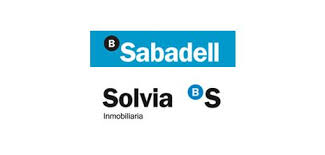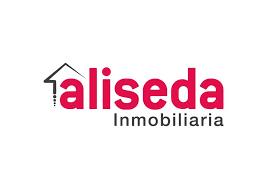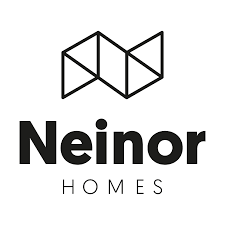Summary
to understand this market
Detailed content
 Inforamtion
Inforamtion
- Number of pages : 30 pages
- Format : Digital and PDF versions
- Last update : 19/08/2020
 Summary and extracts
Summary and extracts
1 Market overview
1.1 Definition and presentation
Real estate development includes companies whose activity is the construction or rehabilitation of real estate products with the aim of reselling them to buyers and investors who will use them directly or offer them for rent.
These real estate products can be of different types: housing, offices, commercial premises, service residences, hotels, leisure facilities....
Thus, in the face of this diversity of supply, the demand also includes a wide range of actors, which may be individuals, companies, public bodies or local authorities.
The real estate market, and therefore, among others, the real estate development market, are special markets in Spain because they were hit hard by the crisis at the beginning of the 21st century. The real estate bubble had indeed triggered a deep recession for the country. Nevertheless, since 2015, the sector has been experiencing renewed dynamism and growth, leading some analysts to fear the formation of a new bubble in the coming years.
1.2 The world market is highly concentrated
In ****, the global real estate market was worth $*.* trillion, up *.*% from ****. [***]
The real estate market is, according to MSCI This was mainly driven by the United States (***), Japan, the United Kingdom, Germany, China, France, Hong Kong, and Canada.
Source: ****
1.3 Spanish real estate market recovery is driven by second-hand goods
Marked by deep crises in ****-**** and ****, the real estate sector is doing well in Spain, with a strong recovery in sales since ****, which have risen from **.** billion euros to **.** billion euros (***). [***]
Source: ****
At the same time, there has been strong growth in the number of transactions on the market. Indeed, ...
2 Demand Analysis
2.1 Home sales are down
If we first compare the figures for total housing sales in **** with those for the corresponding months in ****, we can see that June and especially August **** are down sharply compared to the previous year. Thus, home sales in August **** fell by -**.*% compared to August ****. [***]
Source: ****
Another criterion for assessing market ...
2.2 Falling credit rates fuel demand
Interest rates on real estate loans are a particularly important determinant of the demand for real estate. When interest rates are low, they encourage individuals and businesses to invest, since savings are less attractive. Conversely, with higher borrowing rates, the cost of debt can become prohibitive, which in turn curbs the ...
2.3 Tourism boom drives demand for seasonal rentals and purchases
In ****, purchases of housing by foreigners accounted for **,*** dwellings, or **.*% of the national total and up *.*% compared to ****, almost triple the figures at the end of the ****s. Among these **.*%, there are certainly individuals who wish to live in the country, but also an increasing number of property investors who choose ...
2.4 Uneven demand across regions
Access to the purchase of housing but is not to the same extent according to the Autonomous Communities. Data from the Sociedad de Tasación thus provide an overview of the accessibility index for housing purchase: this index estimates the relationship between the real purchasing power of an average citizen and ...
3 Market structure
3.1 The real estate sector occupies an important place in the Spanish GDP
The real estate sector occupied an increasing share of Spanish GDP until ****: the sector's share of GDP rose from *.*% in **** to **% in ****. Nevertheless, it then decreased to finally represent *.*% in ****.
Source: ****
At the same time, the sector has created more and more value in the economy, with levels of gross value ...
3.2 The boom in real estate development activity
Real estate development activity has been very successful in recent years, which is reflected in an increase in the number of companies registered under the activity code corresponding to INE (***). Thus, the number of companies increased by *.*% between **** and ****. [***]
Source: ****
Market structure by company size
The Spanish Ministerio de Fomento provides ...
3.3 Value chain and structure of the property developer business
The real estate development activity requires the intervention of many actors upstream of the project, during the project, and downstream. Here are the main players in the real estate development value chain
The master builder. This is the project sponsor, the one who defines the specifications. In construction, the project owners ...
3.4 The main Spanish property developers
One of the measures that can be used to gauge the activity of real estate developers is the number of housing units delivered over the next three years (***). [***]
Source: ****
The listing of many real estate developers on the stock exchange
One of the main trends in the structure of the real ...
4 Analysis of the offer
4.1 Products and services
A real estate developer is mainly aimed at individuals, investors, and companies with a real estate project. Generally, they offer real estate development services, but also many other services surrounding their core business
In terms of real estate development they offer contracts:
For Sale in Future State of Completion (***): in this ...
4.2 The resumption of construction
The pace of construction, which had slowed sharply during the crisis in Spain, has seen a timid recovery since **** compared with pre-crisis levels. Thus, in ****, the sector's production index reached ***, ** points below the **** level (***). Nevertheless, this index is up *.*% compared to ****.
Source: ****
Source: ****
The mismatch between supply and demand
Despite this ...
4.3 The rise in property prices is starting to run out of steam
After a fall in prices from **** to ****, the house price index has been on the rise again for * consecutive years, and in **** reached a level of ***.* (***). This price recovery thus reflects a good recovery of the sector after the crisis. [***]
Source: ****
The construction cost index has also been on the rise ...
4.4 The new development paths of real estate developers
According to a report published by Altus Group There are many changes taking place in the real estate development market today. In the face of these changes, some of the players are ready thanks to a set of measures that have already been designed, while others seem on the contrary to ...
4.5 The arrival of the web giants in real estate
Amazon is gradually entering the Spanish real estate market.
During ****, the Spanish version of Amazon's website has put around *** properties located in Madrid, Barcelona and on the Mediterranean coast on its site. Although the properties are not for direct sale on the site, Amazon puts the customer in touch with Altamira, ...
5 Regulation
5.1 The Ley Hipotecaria of 2019
In June ****, a new Mortgage Law came into force in Spain, which entails profound changes in the functioning of the Spanish real estate system and could therefore have a strong impact on real estate development activity.
This Act applies to mortgage loans where the borrower or guarantor is a natural person ...
5.2 Taxation of real estate in Spain
When a private individual wishes to buy a property in Spain, the different tax elements applicable are as follows:
All taxes and fees generally amount to between **% and **% of the purchase price VAT is **% on the purchase of a new property. On the other hand, if the investment does not exceed ...
6 Positioning of the players
6.1 Segmentation
- Altamira (Santander)
- Solvia (Banco Sabadell)
- ServiHabitat (La Caixa)
- Aliseda (Banco Popular/Santander)
- Neinor Homes
- Metrovacesa
- Testa Residencial
- AEDAS Homes
- MERLIN Properties
- Avintia
- Idealista
- FotoCasa
All our studies are available online in PDF format
Take a look at an example of our research on another market!
Companies quoted in this study
This study contains a complete overview of the companies in the market, with the latest figures and news for each company. :
 Choosing this study means :
Choosing this study means :
Access to more than 35 hours of work
Our studies are the result of over 35 hours of research and analysis. Using our studies allows you to devote more time and added value to your projects.
Benefit from 6 years' experience and over 1,500 industry reports already produced
Our expertise enables us to produce comprehensive studies in all sectors, including niche and emerging markets.
Our know-how and methodology enable us to produce reports that offer unique value for money.
Access to several thousand articles and paid-for data
Businesscoot has access to all the paid economic press as well as exclusive databases to carry out its market research (over 30,000 articles and private sources).
To enhance our research, our analysts also use web indicators (semrush, trends, etc.) to identify market trends and company strategies. (Consult our paying sources)
Guaranteed support after your purchase
A team dedicated to after-sales service, to guarantee you a high level of satisfaction. +44 238 097 0676
A digital format designed for our users
Not only do you have access to a PDF, but also to a digital version designed for our customers. This version gives you access to sources, data in Excel format and graphics. The content of the study can therefore be easily retrieved and adapted for your specific needs.
 Our offers :
Our offers :
the real estate development market | Spain
5 reports pack (-15%) ES Spain
- 5 reports at €75.6 excluding VAT per study to choose from our Spanish catalogue for 12 months
- Save 15% on additional studies purchased
- Choose to be refunded any unused credit at the end of the 12-month period (duration of the pack)
See the terms and conditions of the pack and the refund of unused credit.





























